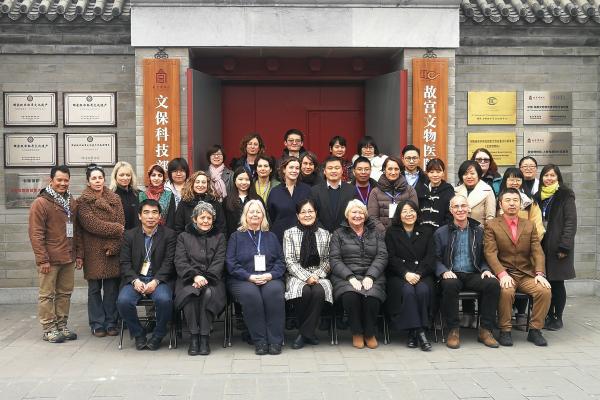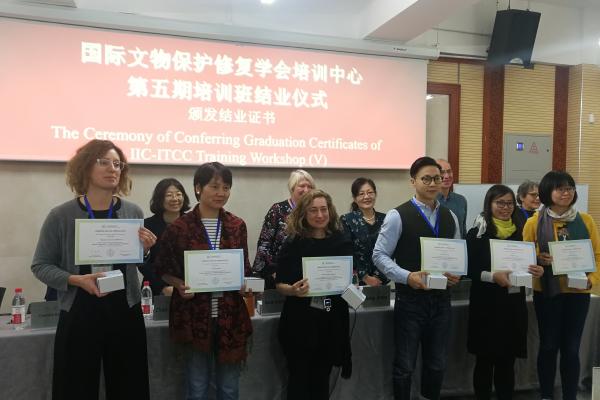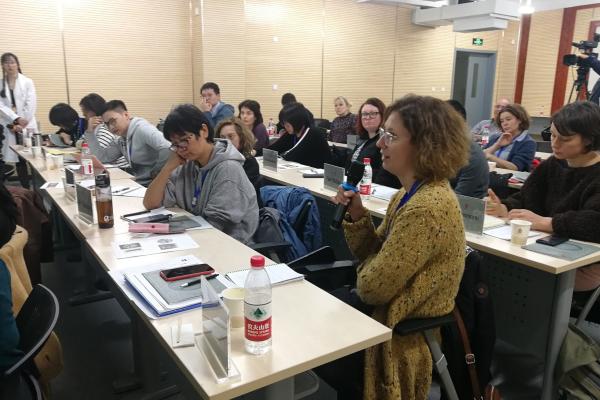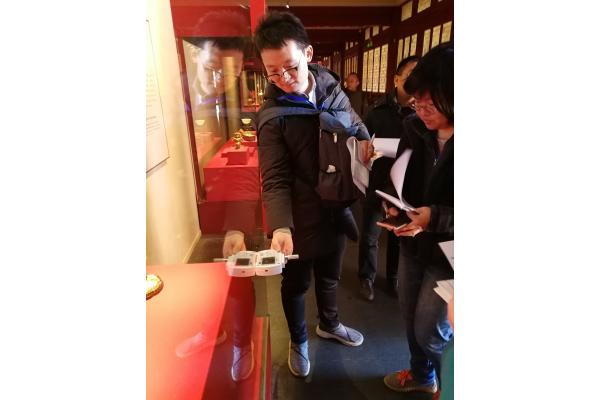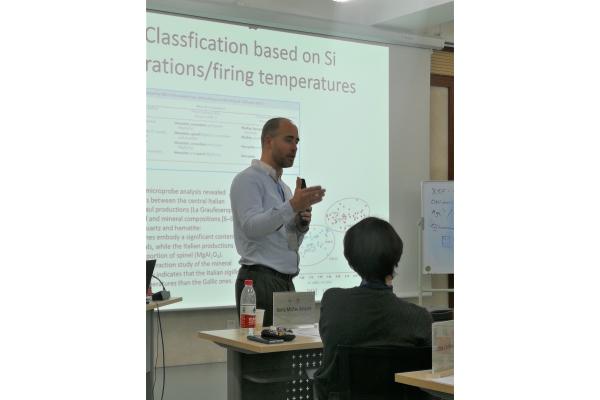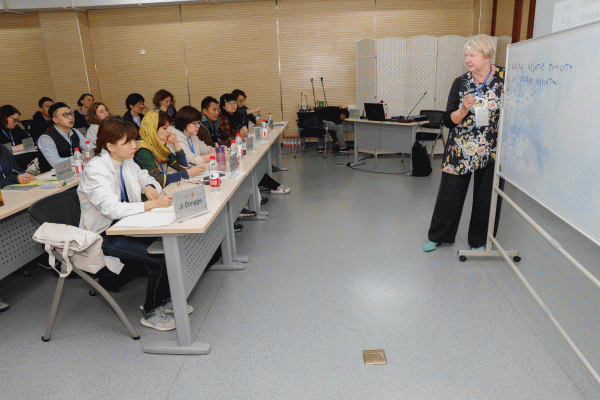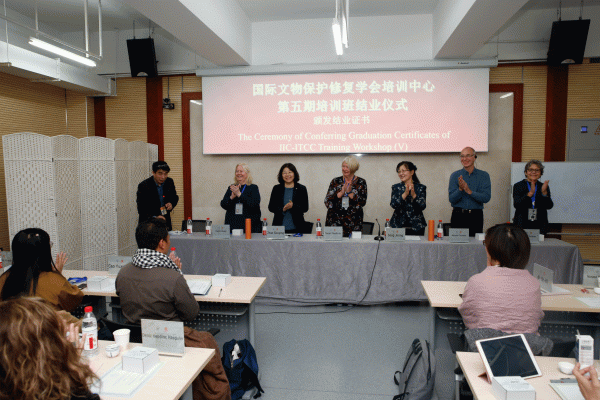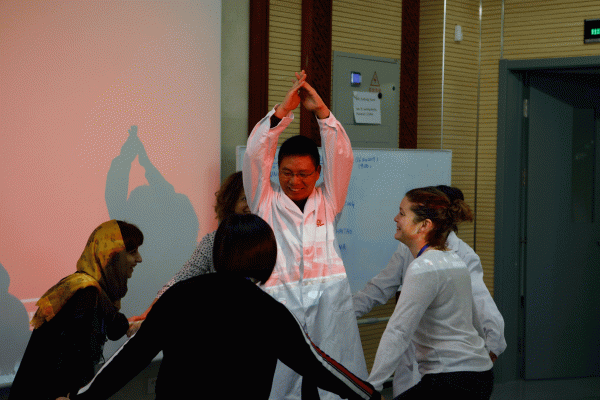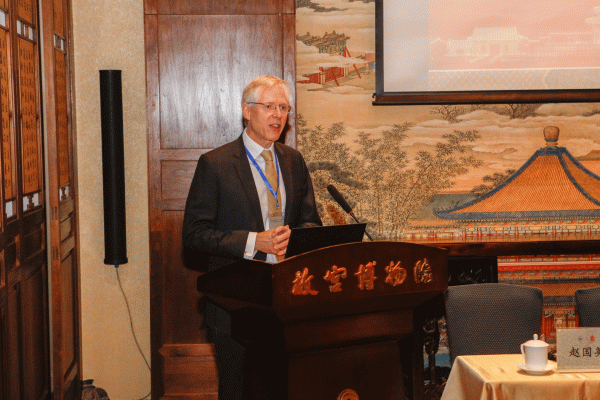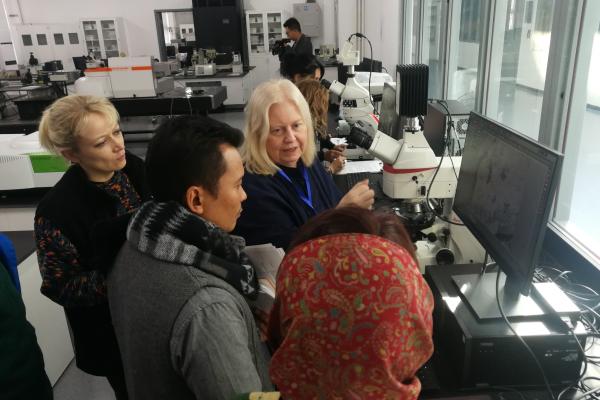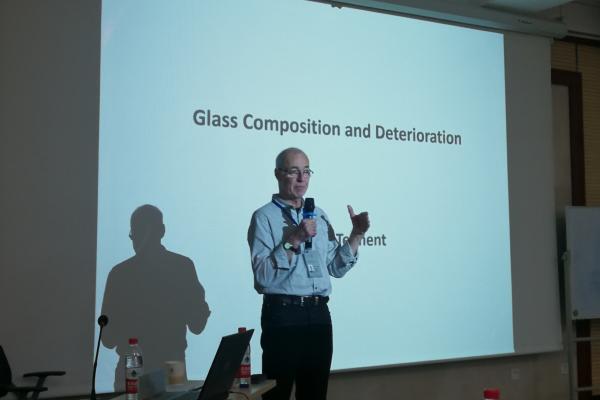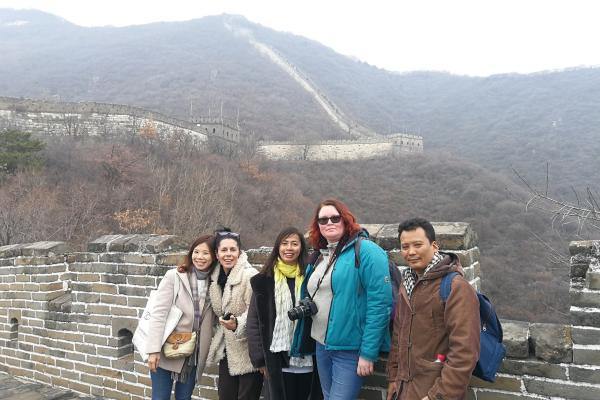ITCC Ceramic and Glass 2019

Group photo after the opening ceremony. Image: Ronnie Kam
IIC-ITCC 2019 Workshop- ‘Scientific Approaches to Ceramics and Glass Conservation’ News Release
Place: Beijing
Venue: Hospital for Conservation, the Palace Museum, Beijing
With the theme ‘Scientific Approaches to Ceramics and Glass Conservation’, the fifth IIC-ITCC 2019 workshop was inaugurated on Monday, 11 November 2019, welcoming 24 fellows who practicing ceramics and glass conservation from the Mainland China and around the world including Belgium, Cambodia, Croatia, Germany, Greece, Hong Kong, Iran, Lithuania, Serbia , Singapore, Turkey and United Kingdom. The diverse background and experience of the participants provided an embracing environment for them to exchange ideas and learn from one another’s culture and practices in handling conservation treatment.
Over the intensive 12-day workshop, participants worked closely with instructors Sarah Staniforth, Chandra Reedy, Austin Nevin, Norman Tennent, Frankie Halahan, and specialists from the Palace Museum. Similar to previous years, the workshop combined theory and with practical sessions. A series of lectures, demonstration, case studies, group works, hands-on sessions and re-cap presentation were arranged in the ‘Conservation Hospital’. Participants were facilitated to examine conservation issues and deterioration mechanisms associated with different types of ceramics and glass-based materials. In the course of the busy workshop schedule, participants had the opportunity to examine the Chinese ceramics and glass collection from the Palace Museum at a close distance during the visit to the “Storehouse” – home to the national treasures. On the Sunday before the close of the workshop, participants had a glimpse of Chinese culture to wind down from their studies as they were arranged to join the excursion to the Great Wall. All were amazed by this longest structure ever built by human with such a long and eventful history.
Most of the participants concluded that the workshop was well structured and organized, and provided a systematic approach for them to identify and resolve risks and problems relating to ceramics and glass objects. Besides, they were very pleased to have expanded their professional network with counterparts from the other parts of the world.
Course details
Curriculum
Information of the 2019 workshop is outlined as follows:
The workshop covered a host of topics designed by the teaching faculty:
- Preventive conservation for ceramics and glass collections
- Non-destructive analysis for ceramics and glass collections
- Practical Session –
- Preventive conservation for ceramics and glass collections
- Non-destructive analysis for ceramics and glass
- X-ray fluorescence (XRF)
- X-ray diffractometer (XRD)
- Fourier transform infrared spectroscopy (FTIR)
- Raman Spectroscopy
- Scientific principles of ceramics and glass conservation at the Palace Museum
- Thin-section petrography
- Presentation of glass and ceramics from the Palace Museum collection
- Glass technology and manufacture, including the use of laser ablation – inductively couple plasma-mass spectrometry (LA-ICP-MS) for glass (and glaze) analysis.
- Ceramics technology and manufacture
- Ceramics deterioration mechanism
- Glass deterioration mechanisms and the identification of unstable vessel glass in museums
- Glass: cleaning and stain removal – mechanical and chemical options
- Ceramics: cleaning and stain removal
- Disassembly
- Adhesives, gap-filling and consolidation – the selection and use of polymers (presentation and practical examples)
- Glass assembly and refractive index (presentation and practical examples)
- Loss compensation techniques – ceramics
- Coloration of polymers for glass and glazes and the use of computer-match pigment selection for over-coming metamerism in ceramic glaze reinstatement
- In-painting
- Packing and handling; storage
- Practice of ceramics techniques
- Glass and ceramics case studies and special projects, completion of projects, participants projects presentations
- Participants projects presentations: queries and problems
- Guest lecture by Director Shan Jixiang
- Analysis of craftsmanship and imitation
- Case studies of ancient ceramics conservation
- Observation of Ancient Ceramics Samples
Lecturers
The teaching team is composed of following conservation specialists:
- Sarah Staniforth – President Emeritus, IIC (UK)
- Jixiang Shan – Director of Gugong Institute (China)
- Chandra Reedy –University of Delaware (US)
- Austin Nevin –University of Gothenburg (Sweden)
- Norman Tennent - University of Texas at Dallas (US)/University of Amsterdam (Netherlands)
- Frankie Halahan –Halahan Associates (UK)
- Jirong Song – Director of the Hospital for Conservation of The Palace Museum / Director of the Scientific Institute for Conservation of the Palace Museum(China)
- Ningchang Shi– The Palace Museum (China)
- Yong Lei – The Palace Museum (China)
- Wusheng Wang– The Palace Museum (China)
Medium of Instruction
The workshop was conducted in English, with simultaneous interpretation provided for the Chinese lectures and practical sessions.
Feedback from participants
"I like the lectures, group discussion and the practical session for analysis. These all are very useful to me. I also appreciated the conservation challenge session presented by each participant…" Monique CHAN, Hong Kong
"Many lectures opens problems and continuing discussion. There were participants with lot of experience, from different regions and backgrounds, conservation challenges…" Maja ŽIVKOVIĆ, Serbia
"Austin Nevin lectures were very useful to broaden my understanding about the technical aspects of non-destructive techniques. The possibility to see the equipment used today for analyses of glass and ceramic. Norman Tennent lecture about coloration of polymers and computer match pigment selection was very useful…" Asta VASILIAUSKAITĖ, Lithuania
"I like the group presentation, demonstration and the hands-on sessions. These will help the participants build the relationship and good connection. We can see closely with the equipment or tools which help us easy to understand…" Sopheara CHAP, Cambodia
"All lectures were very useful and interesting. I really liked also all participants challenges because they gave me the chance to know what other colleagues confront in their everyday work…" Panagiota GKIONI, Greece
Course materials
Reading reference, teaching notes and presentation files of the course are downloadable from the attachment at the bottom of this page. Copyrights of the teaching materials are attributed to IIC-ITCC and the Palace Museum. For inquiries, please feel free to contact the IIC-ITCC Secretariat at iic-itcc@lcsd.gov.hk or iicitcc@126.com.
